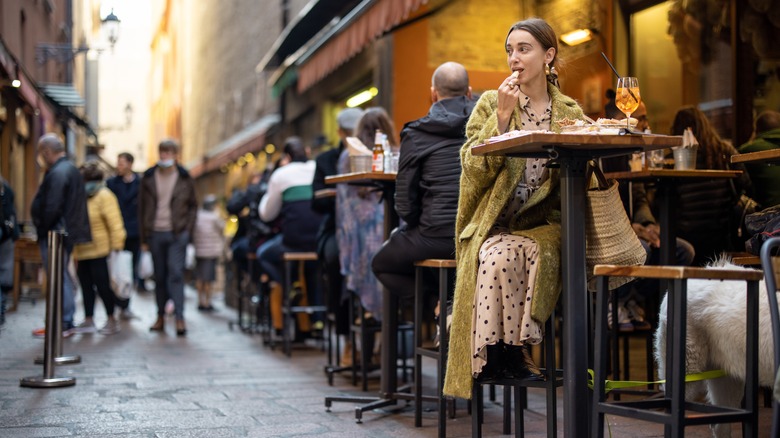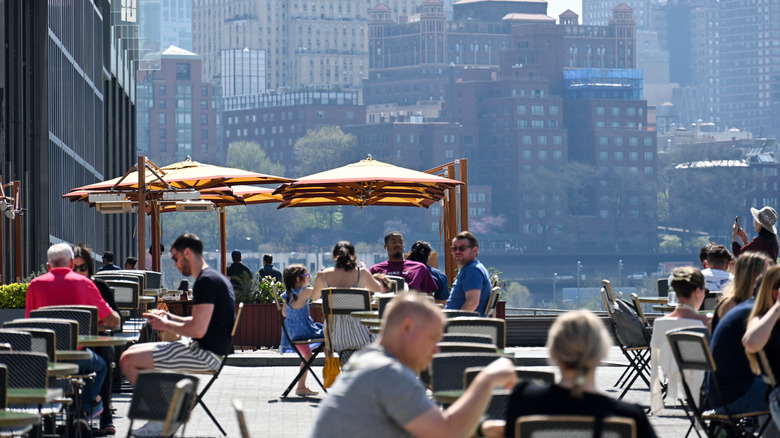Think Twice Before Dining In A Tourist-Trap Restaurant
If you're a globetrotter, one of the items you almost surely have on your itinerary is doing a "food tour" — tasting everything that your chosen local cuisine has to offer. It's part of why traveling is so exciting. However, veteran travelers will know that doing something as simple as searching for a place to eat requires a lot of research and caution — all because of one thing: tourist trap restaurants.
If you're not sure what those are, we highly recommend you learn all about them before you start your trip. These eateries — often located near popular tourist spots (hence the name) — look just like any other establishment from the outside, with charming signs, a lively atmosphere, and lovely decorations. They may seem like great choices for travelers seeking to have a bite, but appearances can be deceiving.
While the outside might look inviting, what happens inside can leave a bad taste in your mouth, literally and figuratively. They often egregiously overcharge you for food, then serve in smaller portions than you'd get at a respectable restaurant. Meanwhile, the quality of the food can be pretty mediocre, or even terrible. In other words, these places sometimes care more about gouging you for all the money you have, rather than offering an authentic culinary experience. You might end up spending way more than you planned, which could mess up your budget. But what's worse, you won't get to enjoy the local cuisine as you should, and that's the true shame.
Warning signs that a place might be a tourist-trap restaurant
There are clear signs to help you decide if a restaurant is good or not. First, consider the restaurant's location. They call these "tourist traps" not without reason. If it's right next door to a landmark, museum, famous park, and so on, you should be on guard when you step inside. Next, observe the other diners. If you notice that the majority of patrons are tourists and there are very few locals, that's your second hint to tread carefully. Locals who are knowledgeable about the food scene in their area will never frequent these shifty places.
Once you're seated and reading the menu, be on the lookout for multilingual descriptions and photos. This means the place is aware it's serving tourists who don't know the local language and cuisine. Though it's not a guarantee, you can use Google Translate, which can translate texts via video and photo, to get a better sense of what's going on in the menu.
However, the most telling sign is the price. Before your trip, research typical food costs and memorize the currency conversion rate. If the restaurant's prices seem unreasonably high for the area or the food, walk out. This is where having a trustworthy local guide or a friend to advise you will be most useful. If you're solo, rely on your instincts and the research you've done. Your wallet and your travel experience depend on it.

